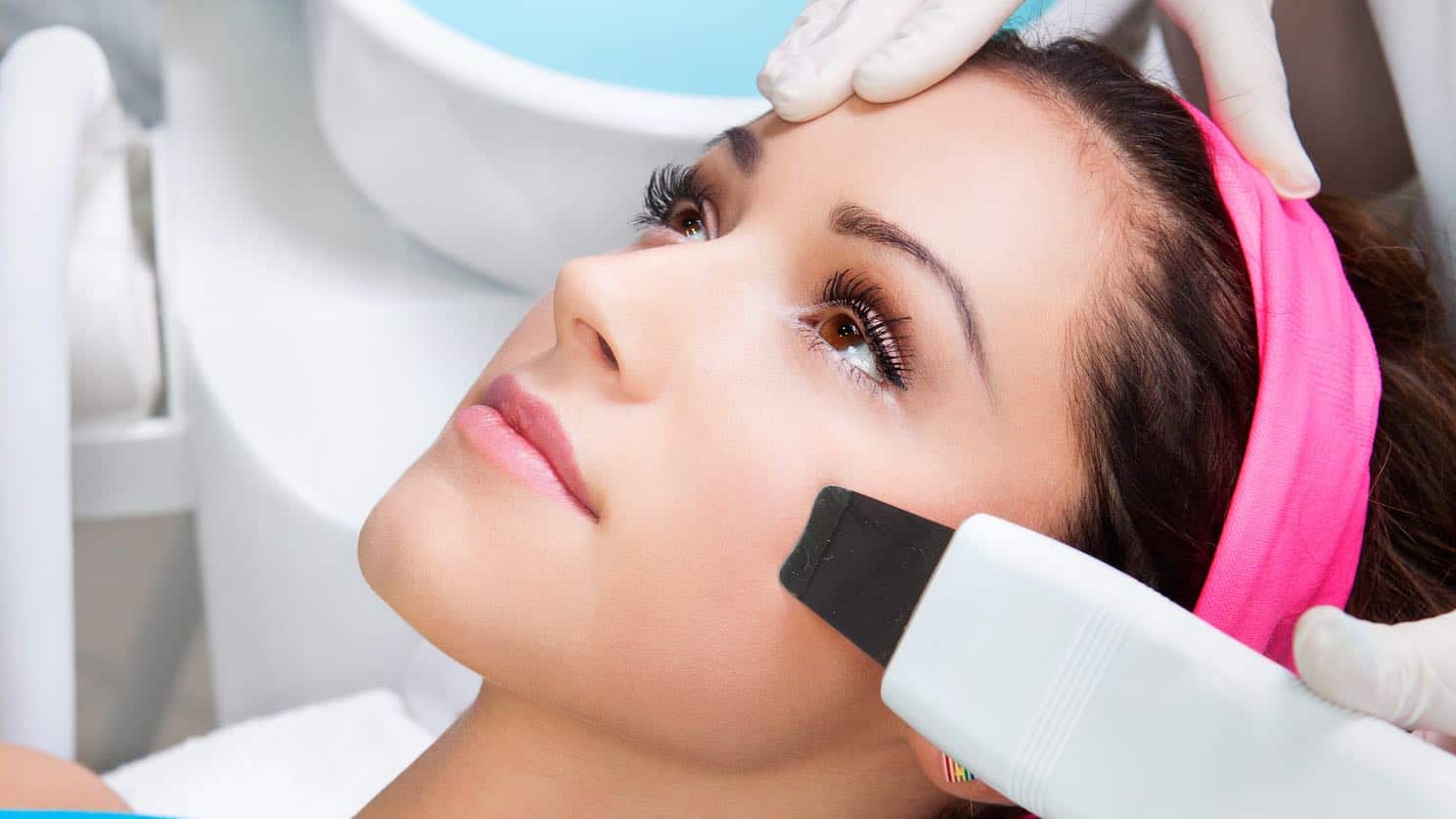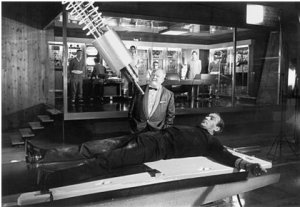Thanks to the art of aesthetic beauty and the science of cosmetic medicine, you can look more beautiful longer. Nowhere is this more evident than in skin rejuvenation, where cosmetic laser treatments are transforming the way people look.
In this article the Costhetics team focuses on the many ways light can be used to brighten your skin. It’s a story you won’t want to miss.
Costhetics Basics: What Is a Cosmetic Laser for Skin Rejuvenation?
Just in case the only information you have about lasers comes from the James Bond movie Goldfinger,
we thought it would be wise to start with some basics. Let’s begin with a definition. L.A.S.E.R. is an acronym that stands for
Light Amplification by
Stimulated Emission of Radiation.
Medical and cosmetic lasers emit a beam of light in a single colour, or wavelength. Lasers offer a broad range of power settings, making them useful in a variety of different applications that rejuvenate the skin.
The chief benefit of lasers for cosmetic rejuvenation is their precision. The high intensity light of a laser can be focused to transmit light energy on to a very small area, which gives us the term laser-focused.
Costhetics Explains Ablative vs. Non-Ablative Cosmetic Lasers
Two types of lasers are used by aesthetic professionals in cosmetic practices. Each has its own purpose and both have proven to be effective in giving skin a youthful glow and radiance.As a general rule, the more you invest in initial discomfort and subsequent recovery, the more you will be able to accomplish in a given treatment.
- Ablative Lasers – Ablative lasers were the first type of laser used for non-surgical cosmetic treatments. They are still used for the same purpose.Ablative lasers work on the surface of your skin. The light they emit vaporises the top two layers of damaged skin. Ablative lasers used for skin resurfacing include a carbon dioxide (CO2) or an Erbium: YAG (a type of metal enriched crystal) laser.
- Non-Ablative Lasers – Non-ablative lasers work at a deeper level without damaging surface skin. Treatments are less aggressive and require less recovery time than with ablative lasers, but they are also less effective.
The chief differences between the effects of ablative and non-ablative lasers have to do with the wavelengths they emit. For this reason, a combination of several different lasers may be recommended to address facial ageing and discoloration.
Light Beyond the Laser for Glowing Skin
Laser light is not the only light used for aesthetic enhancement. Many different light-based technologies are effective at rejuvenating the skin. These technologies include
- Intense Pulsed Light
- LED treatments
- Infrared energy-based technologies
- Radio-frequency based treatments
Intense Pulsed Light Treatments
As you’ve already read, lasers produce a pulse of single wavelength light energy. Intense Pulsed Light (IPL) treatments use a flash lamp (rather than a laser) to rejuvenate skin. Like lasers, IPL machines can be dialled to a range of power settings. Unlike lasers, however, IPL lamps produce light energy of multiple wavelengths and are great for patients with the diffuse redness and dilated vessels on the face associated with rosacea.
IPL treatments provide a primary improvement in pigment (browns and reds). They also heat the deeper layers of skin to stimulate collagen production. Between increased collagen and the improvement in texture and pigment, people who undergo IPL treatments generally experience an overall glow or luminosity to the skin.
The bottom line: If your skin irregularities are mostly to do with pigment, IPL and Pulsed Dye Laser treatments for skin rejuvenation are probably your best bet. If you’re trying to improve deeper textural problems such as pronounced wrinkles and scars, laser technologies are most likely to offer significant improvement.
Costhetics Looks at Cosmetic Uses for Lasers
We could list all the names, sub-categories, and brands of lasers – Nd: YAG, fractional lasers, CO2 lasers, etc. – or provide a detailed and technical explanation of the differences between lasers and light therapies. Instead, however, we’re going to focus on what matters most to you: the benefits of laser skin rejuvenation.
- The Best Way to Erase Fine Lines and Wrinkles – A combination of skin resurfacing and skin tightening can be accomplished with a CO2 laser or Erbium laser. Both are aggressive ablative lasers.The CO2 laser is also an effective tool for the removal of warts and skin tags.
IPL photofacials are also a valuable treatment option, though the results are not as good as with laser treatment.
- The Best Cosmetic Treatment for Skin Tightening – Laser treatments produce a controlled injury to the skin, which will result in some superficialtightening due to increased collagen production. CO2 lasers are considered the most effective in this situation.
Light-based treatments, including infrared devices and radio-frequency-based systems, have also proven to provide good results.
- The Best Way to Remove Pigmented Lesions – Nd:YAG and fractional lasers are the most commonly used tool to treat sun spots, age spots, and other forms of hyperpigmentation.
Intense Pulsed light treatments can also be effective in lightening and smoothing lesions.
- The Best Treatment for Pre-Cancerous Legions – Cancerous lesions should be surgically excised to ensure clear borders and complete removal. However, lasers are an effective treatment to remove pre-cancerous lesions such as actinic keratoses due to sun or ageing.
Ablative lasers such as CO2 and Erbium: YAG are generally the lasers of choice for this problem.
- The Best Way to Treat Vascular Lesions – Broken blood vessels on the face, port wine birthmarks, spider veins on the legs, and other skin irregularities are most often treated with Intense Pulsed Light therapy. As IPL is minimally invasive, it is the first line of treatment.
In some instances, pulsed dye, Nd: YAG, or a diode laser may be indicated.
- The Best Way to Remove a Tattoo – Today’s lasers – CO2 and Nd:YAG – are helping lots of people with tattoo regret. The new generation of lasers is more effective than ever at lightening even the darkest dyes.
IPL can provide some lightening of a tattoo, but is generally not recommended.
- Acne and Acne Scars – The CO2 laser remains the gold standard for treating deep acne scars. More recently however, developments such as the erbium:YAG, fractional laser and certain non-ablative lasers have shown considerable success on more superficial acne scarring.
Is There Anything a Laser Can’t Do?
We should note that laser skin rejuvenation therapies and IPL treatments can improve the tone and texture of skin. They cannot eliminate excessive skin or tighten the sagging skin that can cause a weak chin line and jowls. Other cosmetic treatments and surgical procedures can remedy those problems.
Happily, it is possible to combine a variety of facial rejuvenation treatments into a single session to achieve optimal results in minimal time. A consultation with your aesthetic professional is the best, easiest and smartest way to determine which therapies are right for you and your skin.

